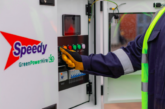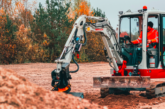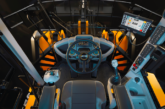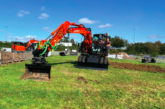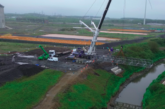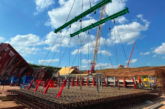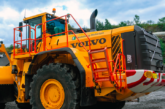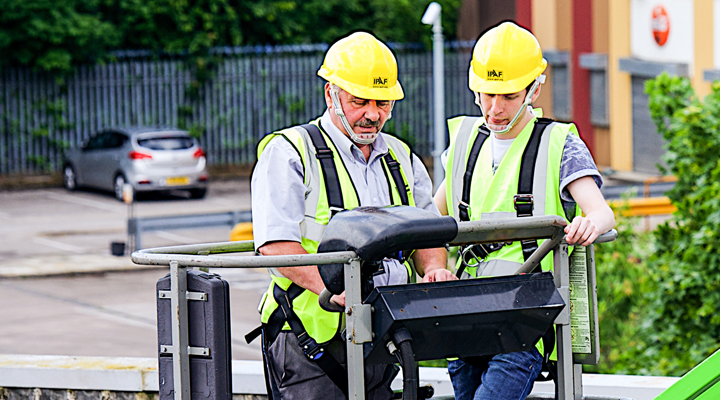
The fatal injury rate (FIR) for mobile elevating work platforms (MEWPs) declined in 2016.
This is despite the fact that the total MEWP rental fleet and the number of rental days worldwide increased significantly over the same period. The data, exclusively collated and interpreted by the International Powered Access Federation (IPAF), indicate that in 2016 there were 66 reported fatalities involving MEWPs worldwide, compared to 68 deaths reported in 2015. During the same period, the size of the global MEWP rental fleet rose from an estimated 1.17 million units at the end of 2015 to 1.25m estimated at the end of 2016.
In 2015, the number of on-hire rental days was 192.2 million and the number of reported fatalities was 68, giving a FIR of 0.35 per 100,000 operating days. In 2016, the number on-hire rental days rose to 206.1m and the number of reported deaths was 66, giving an effective fatal injury rate of 0.32 per 100,000 operating days. This is equivalent to one fatal incident every 3.2 million operating days.
Of the 66 reported MEWP fatalities in 2016, the main causes were falls from height, electrocution, entrapment and overturn of machinery. Chris Wraith, IPAF’s Safety & Technical Executive, who compiles the global accident and fatal injuries data, comments: “While it is heartening to see the effective fatal injury rate fall at the same time as the size of the rental market and number of machine operating days have increased significantly, we must not be complacent.
“It is disappointing to see the same main causes of fatalities being repeated year on year, which suggests that the industry as a whole is not learning the lessons from previous incidents – in 2016 falls from height accounted for 38 per cent of the reported fatalities and electrocution 23 per cent. There were fewer fatal overturns (12 per cent of total fatal incidents, as opposed to 27 per cent in 2015), but entrapments accounted for a higher proportion of the reported deaths (18 per cent) than the year before. In 2015 electrocution and entrapment both accounted for around 15 per cent of the total reported fatalities.
“Investigations show that accidents are most often due to management failings or operator error, which can in almost all cases be anticipated and avoided, or at least mitigated. This is why in 2017 IPAF is pursuing its ‘back to basics’ safety agenda, reminding operators and managers of the need for good risk assessment, choosing the right equipment for the job, proper training for users and supervisors, sound technical and safety guidance and a robust incident reporting regime under which lessons are learned and shared across the business and the wider industry.”

Tim Whiteman, CEO of IPAF, adds: “It is worth pointing out that MEWPs are still by far the safest way to work at height, and overall it is encouraging that the fatal injury rate declined last year even as the global MEWP rental market increased in terms of size and total operating hours.
“By focusing on good practice, employee training and by reporting on near misses as well as accidents and fatalities, companies can help ensure fewer people are injured or killed when operating MEWPs, and hopefully we will see that fatal injury rate decline again in 2017.”
The MEWP fatal injury rate as calculated by IPAF takes into account the following factors:
- Estimated rental fleet size, based on the IPAF Powered Access Rental Market Reports (www.ipaf.org/reports);
- Estimated average utilisation rates per country and worldwide (utilisation rate is defined as the share of the fleet out on rent at any time over a year);
- Average days worked per year (five days a week for 50 weeks a year);
- The number of fatalities involving MEWPs in a given year, based on the IPAF accident reporting project;
- The FIR or any part of the report is subject to change if new data or reported fatalities for the period in question are received.
IPAF’s accident reporting project, launched in 2012, is compiling a comprehensive record of known accidents. The accident data gathered enables IPAF to improve the content of training programmes, develop technical guidance, target specific high-risk professions or activities, and provide research findings to bodies developing and drafting new industry standards.
All manufacturers, rental companies, contractors and users are encouraged to report any known accidents (not just fatal and serious accidents) involving MEWPs and MCWPs (mast climbing work platforms) worldwide at www.ipaf.org/accident. This information is used to make the powered access industry even safer than it is today.
For further information on IPAF click here

